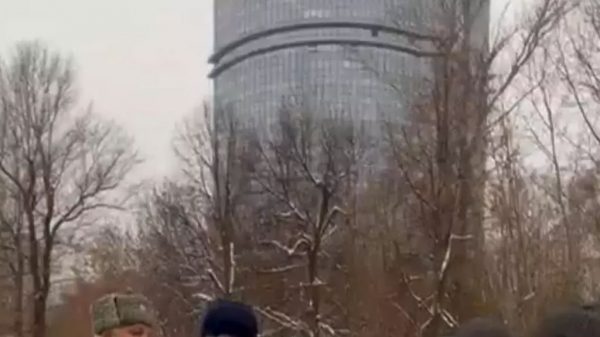Syria: fragile unity or permanent fragmentation?

by Mohamed Hasan Sweidan:
FOR years, discussions of Syria’s Balkanization have lingered as a realistic option that could be imposed on the country one day. The recent political upheaval — marked by the ousting of president Bashar al-Assad — has brought the break-up of the Syrian Arab Republic back into focus.
Over the past decade, Syria has become a stage for competing foreign powers. Russia and Iran supported the Assad government, while the US and its allies, including France, the UK, and Italy, aligned with opposition groups. The actions of Turkiye, and to a lesser extent Qatar, meanwhile, reflected their own ambitions in the fertile crescent of the Levant.
Until recently, four countries — Russia, Iran, Turkiye, and the US — maintained a significant military presence in Syria, collectively controlling 801 bases and outposts, according to this year’s data from the Jusoor Center for Studies.
Competing for influence
EACH country’s strategy reflects its interests — with Turkiye supporting the dominant militant faction Hayat Tahrir al-Sham (HTS), a UN-designated terrorist organisation, and Washington backing the Kurdish-led Syrian Democratic Forces. Ultimately, they all contribute to Syria’s fragmented sovereignty and the competing agendas that dominate its future.
With the collapse of Syria’s former authority, Iran and Hezbollah’s withdrawal, and Russia’s growing uncertainty about its future military presence, new dynamics have emerged that could determine the country’s future. Saudi Arabia and the UAE are taking steps to counterbalance the growing power of HTS and its leader, Ahmad al-Sharaa, more commonly known as Abu Mohammad al-Julani.
These Persian Gulf states view recent developments as both a threat and an opportunity. Riyadh and Abu Dhabi fear the return of political Islam, heavily backed by Ankara and Doha, through a Damascus-led gateway. Simultaneously, they see a chance to strengthen their investments in opposition groups to secure influence in shaping Syria’s next ruling structure.
Other than Israel, which now controls swathes of southern Syria, Turkiye has emerged as one of the biggest beneficiaries of Assad’s fall. Long opposing his rule, Turkish president Recep Tayyip Erdogan expressed his stance as early as 2011, warning Assad that his reign would inevitably end.
In November of that year, the Turkish president reportedly told Assad at a meeting in Istanbul: ‘You can stay in power with tanks and cannons only for a certain period. The day will come when you will leave as well.’
Turkiye and the Kurdish threat
ANKARA has consistently pursued its strategic goals in Syria, particularly in curbing Kurdish territorial ambitions. Erdogan repeatedly vowed to launch military operations in northern Syria, aiming to eliminate fighters linked to the Kurdistan Workers’ Party (PKK), which Ankara, the US, and the EU have officially designated a terrorist organization.
The fall of Assad offered Turkiye an unprecedented opportunity to assert its dominance and block the formation of an independent Kurdish entity, and Ankara’s early support of Julani provided it with leverage over its rivals.
Fighting escalated between Turkish-backed forces, including the Syrian National Army (SNA), and US-supported Kurdish militants in the northeast as HTS-led forces gained momentum. Recently, clashes intensified around Ain al-Arab (Kobani), where Turkish troops and their allied militias reportedly massed, raising fears of a new cross-border offensive.
Washington brokered a ceasefire earlier this month between Ankara, Turkish-backed militants, and US-backed Kurdish forces, which has now been extended to the end of this week, according to the US State Department.
However, a Turkish defence ministry official disputed this claim on December 19, telling Reuters that there is no talk of a ceasefire.
Turkish forces continued strikes in areas like Ain al-Arab and Ain Issa, showcasing Ankara’s readiness to capitalize on its current strategic advantage.
Erdogan’s confidence stems from Turkiye’s strengthened position as rival powers like Iran and Russia diminish in influence. Meanwhile, Ankara’s growing sway complicates the SDF’s ability to garner regional support, leaving the group at its weakest point.
The SDF’s recent decision to adopt the three-starred Syrian independence flag suggests an attempt to integrate into Syria’s post-Assad political framework, but its future remains precarious, with fears of renewed attacks by ISIS and other adversaries.
The semi-autonomous Kurdish administration described the flag as a ‘symbol of this new stage, as it expresses the aspirations of the Syrian people towards freedom, dignity and national unity.’
Partition: A divisive question
THE question of Syria’s partition remains unresolved, influenced by overlapping local, regional, and international factors. The idea gained traction during the so-called Arab Spring and has recently resurfaced, as has the notion of a revival of the Arab Spring and its loosely defined ideals.
Assad’s fall has reignited speculation about splitting the state into distinct entities, including a Sunni-majority region, a Kurdish-controlled federal zone, an Alawite stronghold along the coast, and a Druze enclave in the south.
The transitional government’s ability to maintain Syria’s unity will be a critical factor in testing its stated intention to keep Syria’s territorial integrity whole. Opposition forces, now returning to their original territories, may reorganize and seek roles in shaping the country’s administration.
This recalls the emergence of ‘Rojava’ in northeastern Syria, where the Kurds, in March 2016, declared a federal system from the province of Hasakah. While the Syrian government and most opposition groups rejected this move, the Kurds managed to maintain control over nearly a third of Syria in the intervening years.
Alongside this, discussions about an Alawite stronghold along the coastal Sahel and a Druze entity centred in Suwayda have also regained momentum. In southern Syria, some local armed groups from Suwayda and Daraa, which border Jordan, have actively participated in joint operations with opposition factions.
Holding together a fragile state
IT MUST be noted that the exit of opposition militants from northern Syria and their entrance into all Syrian territories means that the groups once under HTS rule in Idlib have today returned to their basic geography and demographics. This raises the possibility that these groups will reconstitute themselves in their areas and demand a share within the new administration of the country.
The current political stage is marked by anticipation of whether HTS and the interim government can prevent further chaos and consolidate governance under their umbrella. Its leader, Julani, appears to be racing against time to establish a new authority before internal divisions grow insurmountable, all while Israel maintains its grip on the occupied Syrian Golan Heights.
His strategy includes preserving state institutions, accommodating both resident foreign fighters and minority groups, and sending overtures to Arab states and western powers.
These overtures focus on economic recovery, avoiding incendiary Islamic rhetoric, downplaying Israel’s massive territorial grab in southern Syria, and distancing Damascus from Iran and its allies, all while aiming to encourage the west to lift sanctions. The biggest challenge facing the new authorities is whether they can achieve stability and unity, or whether internal fractures and external pressures will drive Syria further toward chaos and fragmentation.
TheCradle.co, December 20. Mohamed Hasan Sweidan is a strategic studies researcher and the author of several studies in the field of international relations. Mohamed’s main focus is on Russian affairs, Turkish politics and the relationship between energy security and geopolitics.























Leave a Reply